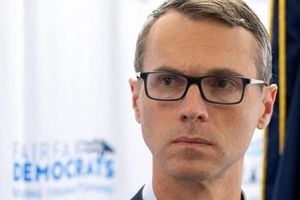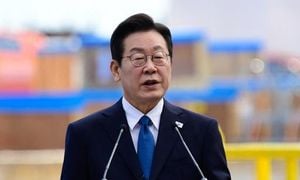Guatemala, Mexico, and Belize have embarked on an ambitious and historic journey to reshape the future of Central America’s environment and infrastructure. Last week, leaders from the three nations gathered in Petén, Guatemala, and Calakmul, Mexico, to sign a declaration that could redefine regional development, conservation, and connectivity for years to come. Their vision? A massive biocultural corridor through the Gran Selva Maya—the second-largest tropical forest in the Americas, trailing only the Amazon—and a cross-border railway connection that could eventually link the continent from north to south.
On August 15, 2025, Guatemalan President Bernardo Arévalo de León and Mexican President Claudia Sheinbaum met in Petén, a lush northern province of Guatemala, with the goal of advancing both environmental protection and economic progress. The event was marked by the signing of a declaration, joined by Belize’s Prime Minister Johnny Briceño, to create the biocultural corridor of the Gran Selva Maya. This corridor will span approximately 5.6 million hectares across Petén, five southern states of Mexico, and a broad swath of Belize, according to Guatemala’s Minister of Environment, Patricia Orantes, as reported by Los Angeles Times.
The scale and ambition of the project are hard to overstate. Not only does the corridor aim to preserve a vast expanse of tropical forest—home to 7,000 species, including jaguars and macaws, with 250 endemic species and 200 classified as endangered—but it also seeks to protect the largest freshwater system in Mesoamerica. Orantes explained, “The forest contains the largest freshwater system in Mesoamerica and a network of caves and underground water conduits that drain all the way to the Mesoamerican Reef, the second largest barrier reef in the world after Australia’s.”
The declaration commits Guatemala, Mexico, and Belize to a raft of conservation measures: strengthening protected areas, promoting sustainable ecotourism, regulating infrastructure development in line with conservation objectives, restoring forested landscapes in agricultural and livestock zones, and boosting both national and international financing. The corridor, in effect, is a lifeline for both nature and the two million people who call the region home.
But the corridor is only one part of a grander vision. President Arévalo, speaking at a press conference at Guatemala’s National Palace of Culture on August 18, detailed his hopes for a continental railway corridor that would facilitate both passenger and freight transport from North to South America. “With Mexico, we are seeking a true railway interconnection of passengers and cargo that aligns with our administration’s development goals,” Arévalo emphasized, according to EFE. The plan involves connecting Guatemala’s dormant railway system—some 400 kilometers of track that have lain unused for decades—to Mexico’s successful Tren Maya, and eventually extending the line into Belize.
“Connecting the Tren Maya with Guatemala and eventually with Belize is a vision we share,” Arévalo stated after his meeting with Sheinbaum. “We agreed to promote the start of ‘trinational’ negotiations, as well as the respective feasibility studies.” He was quick to reassure conservationists, adding, “The Tren Maya (in Guatemala) will not cross any existing protected reserve area.”
Sheinbaum, for her part, echoed the sentiment, describing the Tren Maya as a success in Mexico and expressing her hope that the future link would serve both passengers and freight. The railway, she said, “has enormous potential” for the development of both nations and the wider region.
Guatemala, for its part, is taking concrete steps. On August 12, the government created a committee to reactivate railway transportation, though specific dates and details remain under wraps. Just months earlier, in May, Guatemala signed an agreement with the United States to collaborate on modernizing its ports and revitalizing its long-dormant railways. The timing, officials say, is no coincidence. With the expiration of a 40-year contract for a petroleum company operating in the Guatemalan Maya biosphere—and a decision by President Arévalo not to renew it—the administration has signaled a clear pivot toward environmental stewardship.
Environmental lawyer Rafael Maldonado called the declaration “a historic breakthrough and a challenge that, if it works, will become a conservation area for thousands of species of flora and fauna and the world’s second lung after the Amazon.” He pointed to the government’s refusal to renew the oil contract as evidence of Arévalo’s commitment to the environment: “That demonstrates his commitment to the environmental issue.”
Yet challenges abound. The core of the Maya Biosphere Reserve, Parque Nacional Laguna del Tigre—a sprawling 337,000-hectare expanse in northern Guatemala—has long been plagued by illegal agricultural incursions and drug trafficking. Maldonado stressed the need for renewed governance and community engagement: “Governance must be restored, and the communities accused of participating in drug trafficking must be turned into allies of the park.”
Funding is another hurdle. U.S. budget cuts under former President Donald Trump led to a drop in support for environmental organizations in Guatemala, forcing the country to seek new sources of financing for its conservation ambitions.
Despite these challenges, the political will behind the project appears strong. The leaders’ declaration includes a commitment to sustainable use of the forest, protection of indigenous communities’ human and cultural rights, and joint responses to shared threats. “We committed to cooperate to promote the sustainable use of the forest and to protect it by safeguarding the human and cultural rights of the indigenous communities in this territory, collaborating to respond together to common threats,” Arévalo said.
For the millions living in the region, the stakes couldn’t be higher. The new biocultural corridor and the proposed railway promise not only to protect a unique ecosystem but also to spur economic growth, strengthen cultural ties, and foster a model of sustainable development that respects both people and nature. The leaders’ vision is bold, no doubt, but as history has shown, the fate of the world’s great forests—and the communities that depend on them—often depends on such boldness.
With trinational negotiations, feasibility studies, and infrastructure committees now in motion, the coming months will reveal whether this vision can be turned into reality. For now, the world watches as Guatemala, Mexico, and Belize attempt to chart a new path—one that just might offer a blueprint for the rest of the planet.





